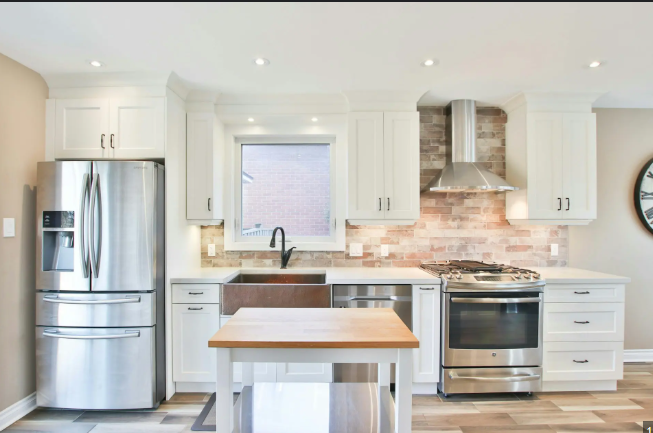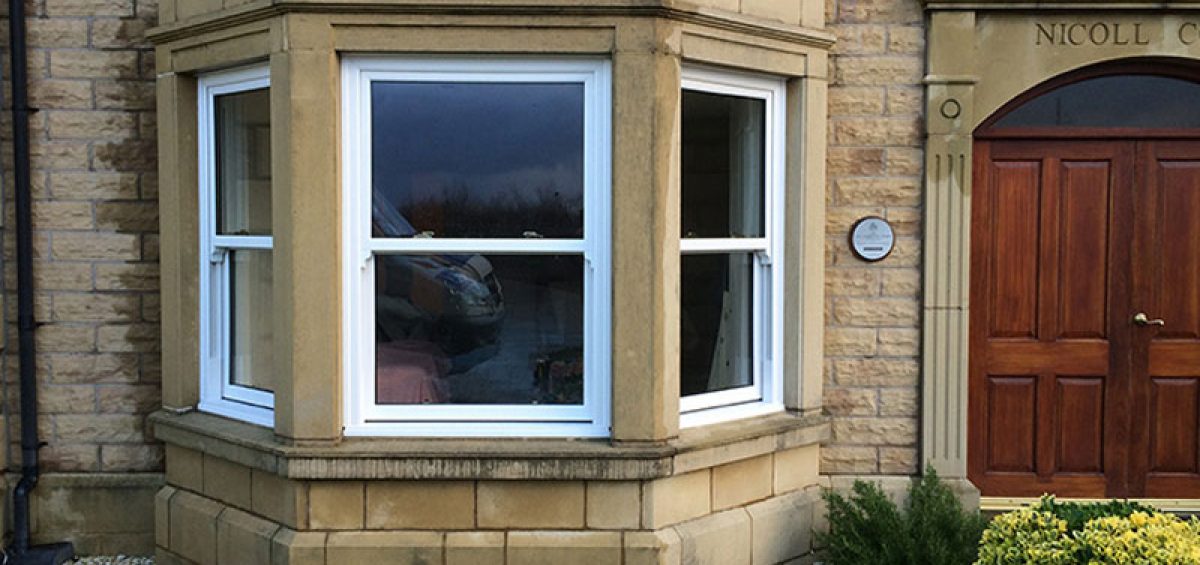
We will explore the various benefits of laminate flooring and shed light on its potential as the future of flooring for rental houses. Laminate flooring presents an array of advantages that make it an appealing choice for both landlords and tenants. Whether you’re looking to renovate your existing rental properties or upgrade the flooring in new investments, understanding the benefits of laminate flooring can guide you towards making an informed decision that will enhance the appeal and value of your rental homes. There are many resources available online, such as this one provided by https://housebouse.com/ , that can provide detailed information regarding installation and the benefits of laminate flooring.
I.The Evolution Of Flooring In Rental Home
A. Creating A Welcoming And Comfortable Living Environment
Flooring plays a vital role in shaping the atmosphere and overall feel of a rental home. It sets the stage for the entire interior design, influencing the visual appeal and ambiance of each room. Beyond aesthetics, flooring also contributes to the comfort and livability of a space. A well-chosen flooring material can create a welcoming environment that tenants are eager to call home.
Tenants seek flooring options that are not only visually pleasing but also durable and easy to maintain. They desire a comfortable surface underfoot that can withstand the daily activities of busy households. As a landlord or property owner, understanding the importance of flooring in creating a desirable living environment is crucial for attracting and retaining tenants.
B. Changing Trends and Preferences in Rental Home Flooring
Over the years, the trends and preferences in rental home flooring have evolved significantly. Traditional options like carpeting, vinyl, and hardwood have been the go-to choices for many landlords in the past. While these materials have their merits, they also come with their fair share of drawbacks.
Carpeting, for instance, offers comfort and insulation but is prone to staining, wear, and trapping allergens. Hardwood flooring exudes timeless elegance but can be costly to install and maintain. Vinyl flooring provides durability and water resistance but may lack the aesthetic appeal desired by tenants. As rental home tenants become more discerning, the demand for flooring materials that strike a balance between style, durability, and affordability continues to grow.
C. Laminate Flooring: A Viable Alternative With Numerous Advantages
Enter laminate flooring, a viable alternative that has gained prominence in the rental home industry. Laminate flooring offers a winning combination of versatility, durability, and cost-effectiveness, making it an attractive choice for both landlords and tenants.
One of the key advantages of laminate flooring is its versatility in design. With advancements in manufacturing techniques, laminate flooring can closely replicate the natural look of various materials such as hardwood, stone, and tile. Whether you desire the warmth and richness of oak, the sleekness of marble, or the earthy charm of ceramic tiles, laminate flooring can provide a budget-friendly solution. This wide range of design options allows landlords to create visually appealing spaces that cater to different tenant preferences.
Durability is another standout feature of laminate flooring. It is engineered with a wear layer that resists scratches, stains, and fading, ensuring that the flooring retains its beauty even in high-traffic areas. This durability translates to reduced maintenance and replacement costs for landlords, making laminate flooring a practical and cost-effective investment. Moreover, laminate flooring is resistant to moisture, making it suitable for areas prone to spills or humidity, such as kitchens and bathrooms. This moisture resistance helps prevent the growth of mould and mildew, contributing to a healthier living environment for tenants.
II. Benefits Of Laminate Flooring For Rental Homes
A. Durability and Longevity
Scratch-Resistant and Wear-Resistant Properties
Laminate flooring is renowned for its exceptional durability and longevity, making it an ideal choice for homes. The top layer of laminate flooring is designed to be scratch-resistant, protecting it from the daily wear and tear that rental properties often endure. This feature ensures that the flooring maintains its pristine appearance even with active tenants or pets.
Withstands Heavy Foot Traffic
Rental home frequently experience heavy foot traffic, which can take a toll on the flooring. Fortunately, laminate flooring is engineered to withstand such demands. Its robust construction and durable core layers make it highly resistant to dents, scuffs, and fading. This resilience allows laminate flooring to retain its quality and aesthetics over an extended period, reducing the need for frequent replacements or repairs.
B. Versatility and Design Options
Wide Range of Design Options
Laminate flooring offers an extensive array of design options to suit various interior styles and preferences. It can realistically replicate the textures and appearances of wood, stone, and tile, providing tenants with a visually appealing and inviting space. From the warm and rustic charm of oak to the sleek and contemporary look of marble, laminate flooring allows landlords to create a cohesive and sophisticated design theme throughout their home.

High-End Replication at an Affordable Price
One of the standout features of laminate flooring is its ability to mimic high-end flooring materials at a fraction of the cost. Tenants can enjoy the luxurious look of hardwood or the elegance of natural stone without the hefty price tag. This affordability makes laminate flooring an attractive option for home, offering a cost-effective solution without compromising on style or quality.
C. Easy Maintenance and Cleaning
Hassle-Free Cleaning Process
Laminate flooring’s smooth and non-porous surface makes it incredibly easy to clean and maintain. Regular sweeping or light vacuuming is usually sufficient to remove dust and debris. For spills or stains, a damp mop or cloth is all that’s needed to restore the flooring’s pristine condition. Unlike other flooring options that may require specialized cleaning products or rigorous maintenance routines, laminate flooring offers convenience and simplicity.
Resistant to Stains and Spills
In rental homes, accidents are bound to happen. Thankfully, laminate flooring is resistant to stains and spills, making it an ideal choice for busy households. The moisture-resistant properties of laminate flooring prevent liquids from seeping into the flooring, giving tenants ample time to clean up spills without worrying about permanent damage. This resistance to stains and spills not only ensures the longevity of the flooring but also contributes to a hygienic and low-maintenance living environment.
D. Cost-Effectiveness
Affordability Compared to Other Options
Laminate flooring is a great choice for rental properties, as it provides an affordable, attractive alternative to higher-priced flooring materials. However, its special composition requires specific attention when making repairs. In particular, wood filler should never be used on laminate flooring, even for minor damage. To ensure a successful paint job, sanding and finishing is necessary to repair any damage. For more information about using wood filler on laminate flooring, visit this website. With this link, landlords can gain a better understanding of the unique care and maintenance needs of laminate flooring, allowing them to protect their investment and keep their rental properties looking great.
Long-Term Cost Savings
Beyond its initial affordability, laminate flooring provides long-term cost savings for landlords. Its durability and resistance to wear and tear reduce the need for frequent repairs or replacements, saving both time and money. Additionally, the low-maintenance nature of laminate flooring means less expenditure on specialized cleaning products or professional cleaning services. Over time, these cost savings add up, making laminate flooring a financially savvy investment for rental property owners.

III.Conclusion
We have explored the significance of flooring in rental homes and introduced laminate flooring as a versatile and beneficial option. We highlighted the evolving trends in rental home flooring, emphasizing the need for materials that offer durability, versatility, and cost-effectiveness. Laminate flooring emerged as a standout choice, offering numerous benefits that make it an ideal flooring solution for rental properties.
Frequently Asked Questions (FAQ)
Q1: What is laminate flooring?
A1: Laminate flooring is a synthetic flooring material composed of multiple layers that are fused together. It often mimics the appearance of natural materials like hardwood, stone, or tile.
Q2: Why is laminate flooring a good choice for rental houses?
A2: Laminate flooring offers several benefits for homes. It is durable, scratch-resistant, and can withstand heavy foot traffic. It is also affordable, easy to clean, and comes in a wide range of design options.
Q3: Can laminate flooring mimic the look of real wood or stone?
A3: Yes, laminate flooring can convincingly replicate the look of real wood, stone, or tile. With advancements in manufacturing technology, laminate flooring offers a variety of realistic textures and patterns.
Q4: Is laminate flooring easy to maintain?
A4: Yes, laminate flooring is easy to maintain. Regular sweeping or light vacuuming, along with occasional damp mopping, is typically sufficient to keep it clean. Its smooth and non-porous surface resists stains and spills, making it ideal for rental houses.
Q5: How durable is laminate flooring?
A5: Laminate flooring is highly durable and resistant to scratches, dents, and fading. It is engineered to withstand the demands of busy rental houses and can maintain its appearance for many years.



